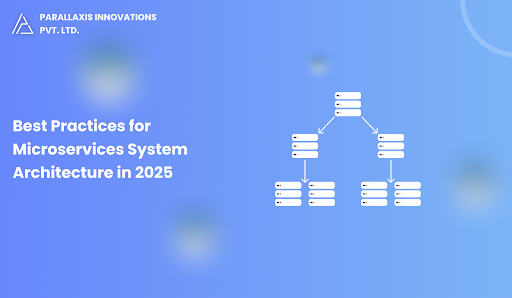Innovations
Microservices have become very popular in the last 10 years. In 2025, they are still one of the best ways to build modern, fast, and flexible software. But the...

Microservices have become very popular in the last 10 years. In 2025, they are still one of the best ways to build modern, fast, and flexible software. But the way we build and manage microservices has improved a lot.
If you’re new to microservices or hearing about them for the first time — don’t worry! This blog will help you understand the best ways to design and manage microservices in 2025. We’ll talk about design, security, monitoring, deployment, and teamwork — in simple words.
Each microservice should focus on one specific task or part of the business — like login, payments, or sending emails.
Why this helps:
Every service has a clear job.
It's easier to manage and grow each service.
Teams can fully own and take care of their services.
Pro Tip: Use planning tools like EventStorming to decide what services you need before writing code.
APIs are the way services talk to each other. Make sure they are simple, well-written, and versioned (v1, v2, etc.).
Best practices:
Write clear and simple API rules (use tools like Swagger or OpenAPI).
Use GraphQL if you need flexible data access.
Don’t remove old APIs suddenly — keep them working for other services.
Pro Tip: Test your APIs automatically using tools like GitHub Actions or Jenkins.
As your app grows, services need help talking to each other. A service mesh like Istio or Linkerd helps with this.
It helps by:
Sending requests to the right service.
Sharing traffic evenly.
Encrypting service-to-service messages.
Watching service performance with logs and metrics.
Pro Tip: Don’t use a service mesh too early. Add it only when your system becomes big.
Kubernetes is the most popular tool to run microservices today. Make sure your services follow its rules.
Use tools and practices like:
Sidecars for logs and proxies.
Twelve-Factor App rules to build better services.
Helm, Kustomize, or Argo CD to deploy services easily.
Many systems in 2025 use event-based communication instead of direct requests. This means services send and receive messages instead of calling each other directly.
Tools to use:
Kafka, NATS, or AWS EventBridge for sending events.
Use event sourcing to track changes over time.
Use CQRS to handle data updates and reading separately.
Pro Tip: Always make sure events are saved safely and can be repeated without errors.
You need to see what’s happening inside your system.
Add:
Tracing to follow a request through all services (e.g., OpenTelemetry, Jaeger).
Logging to record errors and activity (e.g., ELK Stack, Loki).
Metrics to track how your app is doing (e.g., Prometheus, Grafana).
Watch these 4 key things:
Latency (how slow it is)
Traffic (how busy it is)
Errors (what goes wrong)
Saturation (is it overloaded?)
Never assume your services are safe by default.
Best practices:
Use Zero Trust — every connection must be checked.
Store secrets safely (e.g., Vault, AWS Secrets Manager).
Set limits to avoid abuse (e.g., rate limits).
Pro Tip: Use tools like OPA to check if your security rules are followed.
When you have many services, automate everything.
Do this:
Use CI/CD tools like GitHub Actions or Jenkins X.
Add security scans to check your code automatically.
Release updates safely with blue/green or canary deployments.
Manage your servers using code (e.g., Terraform, Pulumi).
Things will go wrong — be prepared.
Tips:
Use circuit breakers, retries, and timeouts.
Use bulkheads to stop one failure from affecting everything.
Show fallback messages or limited features when something breaks.
Pro Tip: Try Chaos Engineering — test how your system behaves when something fails.
Running many microservices can get expensive.
Save money by:
Tracking CPU, memory, and data use.
Using cost tracking tools like Kubecost or AWS Cost Explorer.
Turning off or shrinking services you don’t need.
Pro Tip: Use autoscaling so services grow or shrink based on real usage.
Microservices in 2025 are not just about breaking software into pieces — they’re about building smart, flexible, and secure systems that can grow.
If you follow these simple best practices, you’ll build better apps — whether you’re starting fresh or updating an old system.
Keep it simple, plan ahead, and always build with growth, safety, and performance in mind.